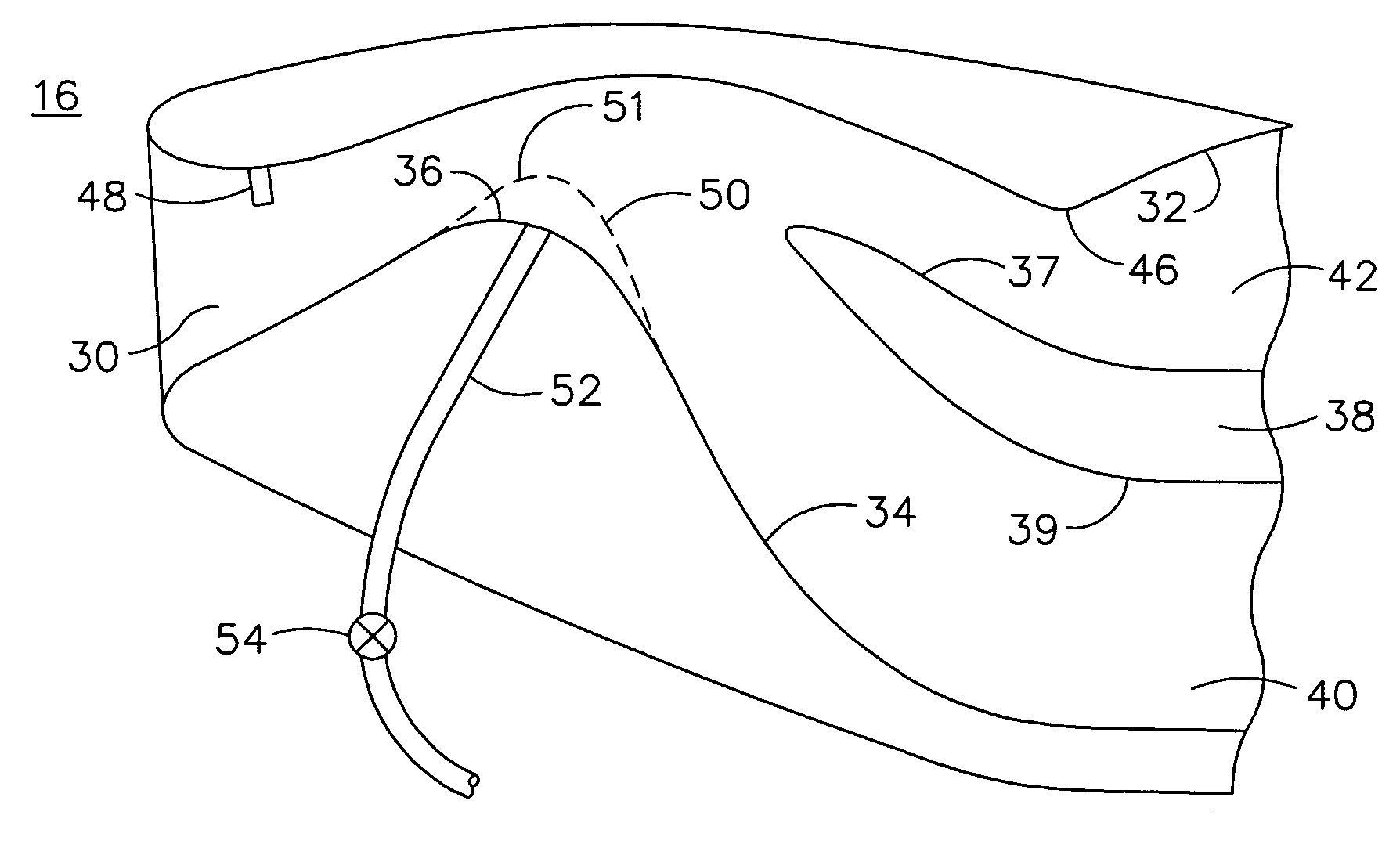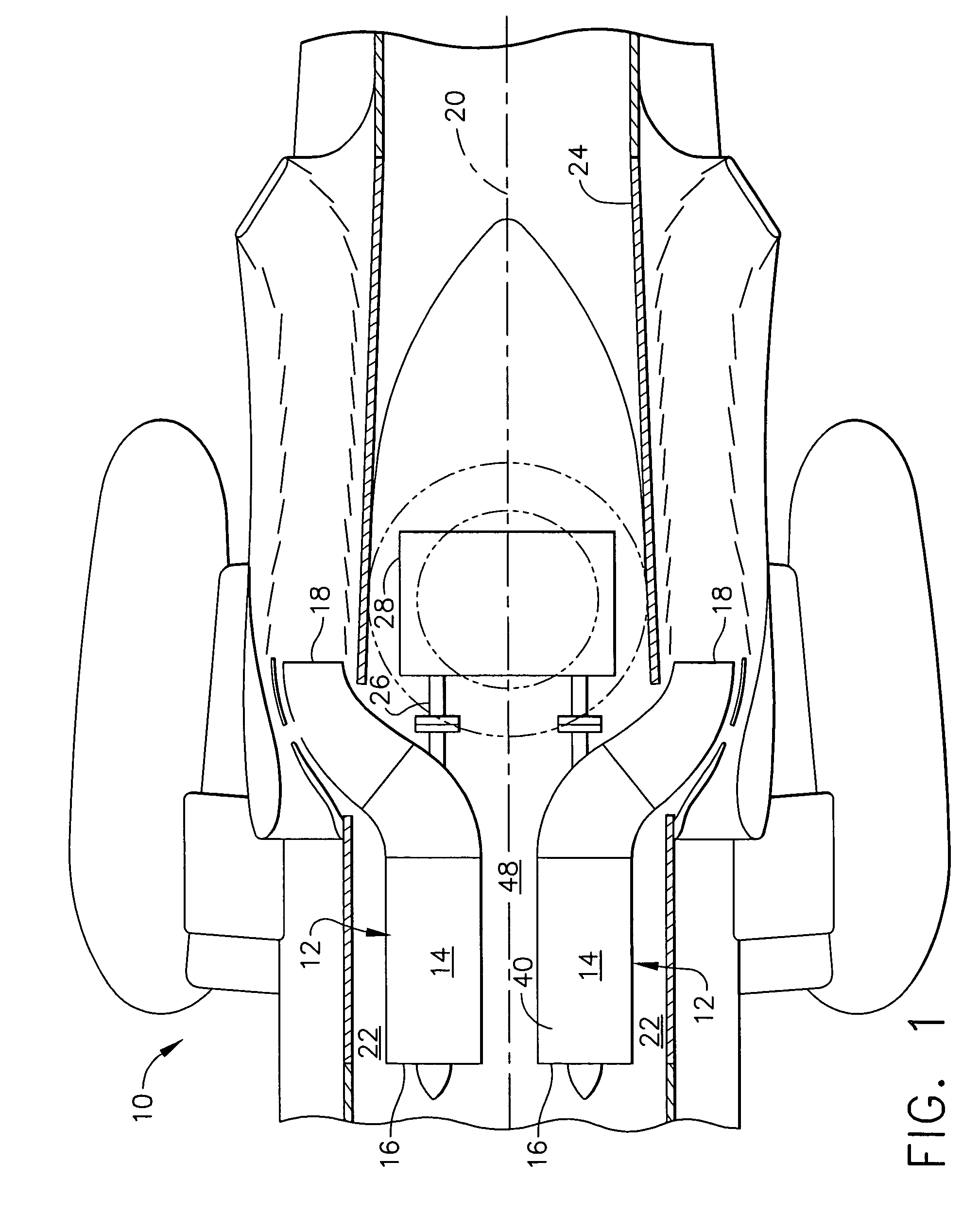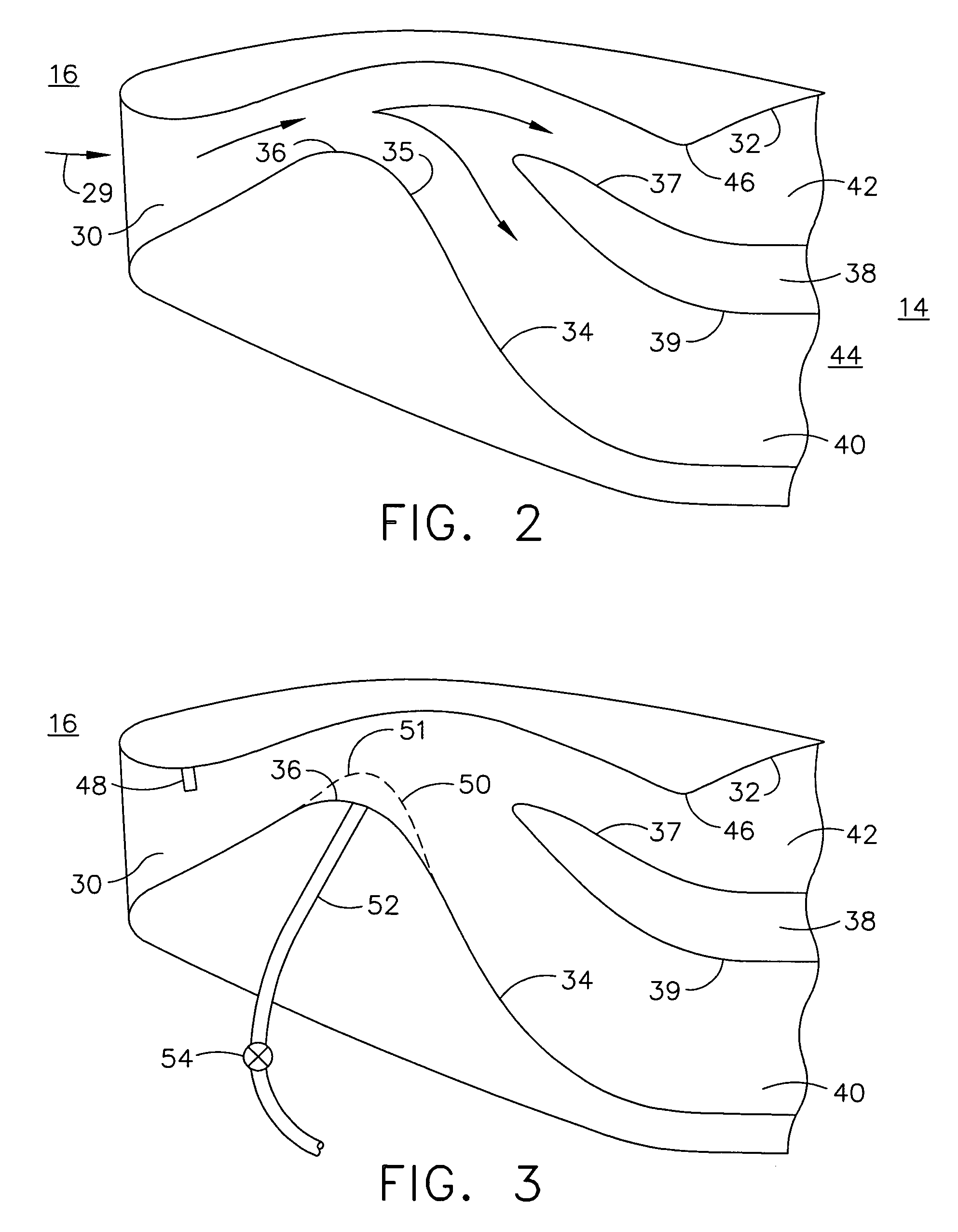Adaptive inertial particle separators and methods of use
a technology of inertial particle separator and inertial particle separator, which is applied in the direction of machines/engines, combustion-air/fuel-air treatment, mechanical equipment, etc., can solve the problems of increasing the frequency of engine repair and maintenance, affecting engine performance and reliability, and not providing adequate separation efficiency, so as to facilitate the entry of particles, and facilitate the passage of clean air
- Summary
- Abstract
- Description
- Claims
- Application Information
AI Technical Summary
Benefits of technology
Problems solved by technology
Method used
Image
Examples
Embodiment Construction
[0016]FIG. 1 is a plan view of a portion of an exemplary helicopter 10 that includes two gas turbine engine assemblies 12. Each gas turbine engine assembly 12 includes a pair of gas turbine engines 14, each of which includes an inlet 16 and an exhaust 18. The gas turbine engines 14 are oriented symmetrically with respect to an axis of symmetry 20 extending axially between the gas turbine engines 14. Moreover, gas turbine engines 14 are mounted within an engine compartment 22 defined by a helicopter fuselage 24. A rear drive shaft 26 extends from each gas turbine engine 14 to a main transmission 28. In other designs, drive shaft 26 may extend out of the front of each engine 14.
[0017]FIG. 2 is an enlarged cross-sectional view of a portion of gas turbine engine inlet 16. Inlet 16 may be integral with engine 14 or may be separate from engine 14. In the exemplary embodiment, inlet 16 functions as an inertial particle separator (IPS) and includes an entry channel 30 defined by an outer su...
PUM
 Login to View More
Login to View More Abstract
Description
Claims
Application Information
 Login to View More
Login to View More - R&D
- Intellectual Property
- Life Sciences
- Materials
- Tech Scout
- Unparalleled Data Quality
- Higher Quality Content
- 60% Fewer Hallucinations
Browse by: Latest US Patents, China's latest patents, Technical Efficacy Thesaurus, Application Domain, Technology Topic, Popular Technical Reports.
© 2025 PatSnap. All rights reserved.Legal|Privacy policy|Modern Slavery Act Transparency Statement|Sitemap|About US| Contact US: help@patsnap.com



